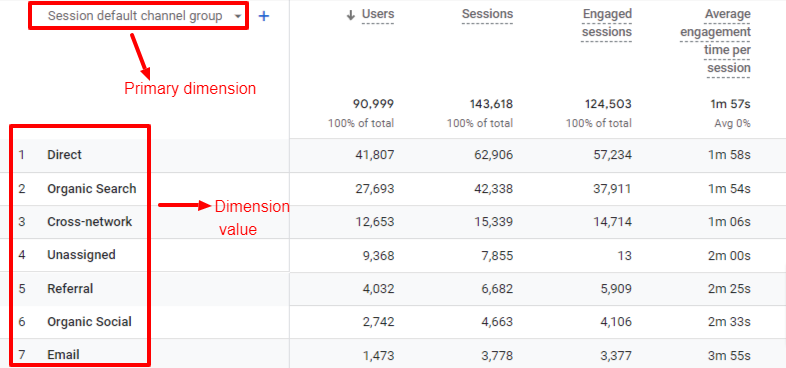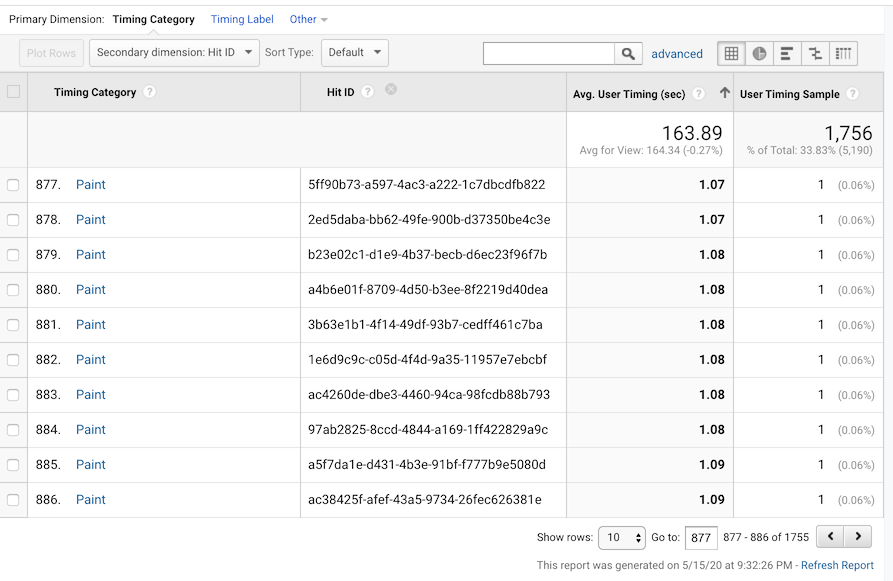Boost Your Data Evaluation with Secondary Dimension in Google Analytics
Boost Your Data Evaluation with Secondary Dimension in Google Analytics
Blog Article
Gain In-depth Viewpoints With Second Dimension in Google Analytics
Second measurements in Google Analytics act as a powerful tool for enhancing the depth of insights derived from data analysis. Remain tuned to find how additional measurements can revolutionize your information evaluation and drive educated decision-making in the digital world.
Understanding Additional Measurements in GA
Secondary measurements enable users to dig much deeper into their information by including an extra layer of info to the main information being examined. By incorporating additional measurements, customers can section and contrast data throughout various dimensions, such as website traffic sources, user gadgets, geographic locations, and a lot more.
Recognizing how to effectively utilize secondary measurements in Google Analytics is important for removing important understandings from the information gathered. By selecting the proper second dimensions to match key metrics, individuals can reveal patterns, trends, and connections that might have or else gone unnoticed. This deeper degree of evaluation can lead to more enlightened decision-making and the optimization of digital advertising approaches to enhance general efficiency.
Benefits of Using Additional Dimensions
Exploring the benefits integral in leveraging second dimensions within Google Analytics illuminates the deepness of understandings available for enhancing data analysis. By including second dimensions, users can gain a more thorough understanding of their primary data metrics. One of the essential benefits is the capability to section and filter information, permitting an extra comprehensive evaluation of particular measurements such as traffic resources, user behavior, or geographical area - Secondary Dimension in Google Analytics. When looking at the information in seclusion., this segmentation helps in identifying patterns, trends, and correlations that could not be noticeable.
Furthermore, second measurements enable users to compare and contrast various data factors within the exact same report, providing an extra holistic sight of internet site efficiency. This comparative evaluation can clarify the effectiveness of advertising campaigns, web content interaction, or user demographics. Furthermore, using additional measurements can help in recognizing outliers or anomalies that might call for additional investigation.
Basically, leveraging secondary measurements in Google Analytics provides an effective device for drawing out beneficial understandings and optimizing data-driven decision-making procedures.
Carrying Out Second Dimensions Successfully
To efficiently apply secondary dimensions in Google Analytics, planning the choice and application of these additional data layers is extremely important for optimizing the depth of insights originated from analytics reports. When picking additional dimensions, take into consideration the specific goals of your analysis to guarantee the chosen measurements straighten with the details required to respond to essential inquiries. It's important to focus on significance over quantity, selecting dimensions that match the main measurement and provide meaningful context.
Moreover, recognizing the connection in between the secondary and primary dimensions is crucial. This comprehension enables you to translate the information accurately and draw workable verdicts. Implementing secondary dimensions efficiently includes utilizing them to discover patterns, patterns, and correlations that may not be obvious when examining data entirely based on the key measurement. By incorporating additional dimensions attentively, you can improve the granularity of your analysis and gain much deeper understandings right into customer actions, content performance, and various other key metrics within Google Analytics.
Analyzing Information With Additional Measurements
Using secondary dimensions in data evaluation offers a nuanced perspective that discovers complex partnerships and patterns within Google Analytics reports. By including additional dimensions along with key dimensions, experts can delve much deeper right into the information to extract beneficial insights. When analyzing information entirely based on main measurements., this method enables the identification of connections that might not be instantly Extra resources apparent.
When evaluating information with second dimensions in Google Analytics, it is important to take into consideration the certain metrics or measurements that will offer one of the most purposeful context for the key measurement being analyzed. Combining the key measurement of 'web traffic resource' with second measurements such as 'device category' or 'landing web page' can use an extra thorough understanding of customer actions and preferences.
Moreover, the capability to section data using second measurements permits for an extra granular assessment of individual communications, helping in the optimization of marketing methods, site efficiency, and overall customer experience. By leveraging second dimensions efficiently, services can make enlightened choices based on a detailed analysis of their Google Analytics information.
Best Practices for Additional Measurements
When executing secondary measurements in Google Analytics, accuracy in picking pertinent metrics is vital for deriving workable understandings from the information evaluation process. One of the most effective practices for utilizing second dimensions effectively is to straighten them with your main dimension to read here gain an extra detailed understanding of your site or campaign efficiency. If your main measurement is 'Source/Medium,' combining it with additional measurements like 'Device Classification' or 'Landing Page' can give insights right into just how different gadgets or touchdown pages effect website traffic from different resources.

Routinely exploring with various mixes of additional and key measurements can help you find brand-new relationships and trends within your data, enabling you to enhance your approaches and improve overall performance (Secondary Dimension in Google Analytics). By complying find out with these finest techniques, you can leverage secondary dimensions in Google Analytics successfully to obtain much deeper insights and make data-driven decisions that positively impact your service

Conclusion
To conclude, secondary dimensions in Google Analytics supply an important chance to get much deeper understandings right into primary data metrics. By adding an additional measurement to records, businesses can uncover connections, patterns, and patterns that might not be immediately obvious, causing a more comprehensive understanding of individual habits and interactions on a site. Implementing additional dimensions effectively and evaluating data with them can assist services make data-driven decisions and maximize their on-line efficiency.
By incorporating second dimensions, users can segment and contrast information across various dimensions, such as website traffic resources, user tools, geographic locations, and much more. Implementing second dimensions effectively entails utilizing them to reveal patterns, trends, and connections that may not be obvious when analyzing data exclusively based on the main dimension. By integrating secondary measurements alongside main measurements, analysts can dig much deeper right into the information to extract useful understandings. One of the ideal methods for utilizing secondary dimensions successfully is to align them with your key dimension to obtain a more thorough understanding of your website or campaign performance. If your key measurement is 'Source/Medium,' coupling it with secondary measurements like 'Device Group' or 'Landing Page' can offer insights into how different devices or landing web pages influence web traffic from numerous resources.
Report this page